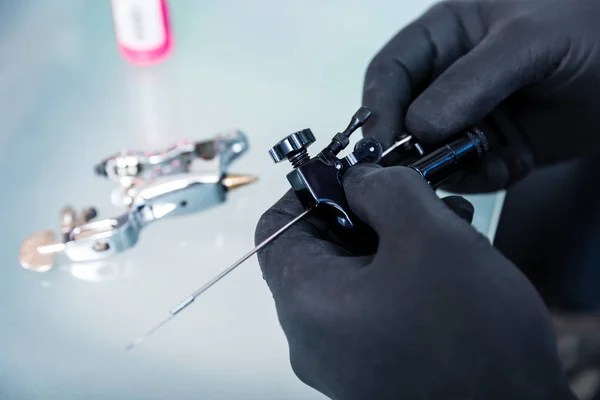
Hand injuries are common in workplaces and can happen to anyone, regardless of occupation. One way to protect the hands from hazards is to wear gloves. Gloves are essential personal protective equipment (PPE) that protect workers’ hands from cuts, punctures, abrasions, chemicals, and extreme temperatures.
Wearing gloves alone is not enough. It is crucial to select the appropriate glove for the task, wear them correctly, and dispose of them safely to avoid cross-contamination. This article will discuss common glove hazards and provide tips on preventing them.
Common Glove Hazards
-
Chemical Hazards
Workers who handle chemicals are at risk of chemical exposure through their skin. Gloves can provide protection against chemical exposure, but only if they are the right type and worn correctly. The wrong type of glove can increase the risk of chemical exposure.
For example, latex gloves can break down when exposed to certain chemicals, such as acetone, and allow chemicals to seep through. Black nitrile gloves, on the other hand, are commonly used for trade-based jobs like mechanics and technicians.
To prevent chemical hazards, workers should use gloves made of the right material for the chemicals they handle. The Occupational Safety and Health Administration (OSHA) recommends consulting the glove manufacturer’s chemical resistance chart to determine the correct glove material for the job. Workers should also inspect gloves before use for signs of wear and tear, such as holes or cracks, and replace them as needed.
-
Biological Hazards
Workers in healthcare, animal care, and food handling are at risk of exposure to biological hazards, such as bloodborne pathogens, bacteria, and viruses. Gloves can provide protection against biological threats, but only if they are the right type and worn correctly. The wrong type of glove can increase the risk of exposure by providing a false sense of security.
To prevent biological hazards, workers should use gloves made of the right material for the job. For example, nitrile gloves are recommended for healthcare workers handling chemotherapy drugs because they provide better chemical resistance than latex gloves. Workers should also follow proper glove use protocols, such as washing hands before and after glove use, changing gloves between tasks, and disposing of gloves properly.
-
Cuts and Punctures
Sharp tools, broken glass, metal edges, and sharp objects pose a significant risk of cuts and punctures. To prevent these hazards, workers should use gloves made of cut-resistant materials, such as Kevlar or stainless steel mesh. Workers should inspect their gloves before use for holes or tears and replace them when necessary.
-
Heat and Cold
Workers exposed to extreme temperatures, such as those in the construction or food industry, are at risk of thermal hazards. Workers should wear gloves that provide insulation against extreme temperatures, such as heat-resistant or cold-resistant gloves. Workers should also take breaks as necessary to prevent hand fatigue or discomfort.
-
Electrical Hazards
Workers who work with electricity are at risk of electrical hazards, such as electrical shock or burns. Workers should wear gloves made of dielectric materials, such as rubber or latex, which do not conduct electricity. Gloves should be tested and certified to the relevant electrical standards.
Preventing Glove Hazards
-
Proper Glove Selection
Choosing the right gloves for the job is crucial in ensuring worker safety. Employers should evaluate the hazards present in their workplace and select gloves that provide adequate protection against those hazards. Different gloves are designed for various tasks and risks. For instance, chemical-resistant gloves should be used when handling hazardous chemicals, while cut-resistant gloves should be used when handling sharp objects.
Gloves should fit properly and comfortably. Ill-fitting gloves can be uncomfortable and restrict hand movement, leading to hand fatigue and decreased productivity. Workers should be provided with different glove sizes to ensure a proper fit. Employers should also consider its durability, as some gloves may need to be replaced more frequently than others.
Gloves.com’s medical grade offerings are tested, good quality rubber gloves with the lowest prices in the market and guaranteed fast shipping.
-
Proper Glove Use
Workers should be trained on the proper use of gloves, including how to correctly put on and take off gloves. Gloves should be put on before beginning a task and removed after completion. Workers should avoid touching surfaces while wearing gloves to prevent cross-contamination.
Gloves should be inspected before use for holes or tears, and workers should replace them when necessary. Worn or damaged gloves may not provide adequate protection and should be discarded immediately.
It is also important to note that gloves are not a substitute for hand washing. Workers should wash their hands before putting on gloves and after removing them. Gloves should be changed if they become contaminated or workers move from one task to another.
-
Proper Glove Disposal
Workers should dispose of gloves safely and appropriately to prevent cross-contamination. Workers should remove gloves by grabbing the outside of the glove, pulling it off inside out, and disposing it in the appropriate waste bin. Workers should then wash their hands thoroughly with soap and water.
Conclusion
Gloves are essential PPE that protect workers’ hands from various hazards. Workers should select the appropriate gloves, wear them correctly, and dispose of them safely to prevent hand injuries and cross-contamination. Employers should provide suitable gloves and train workers on proper glove use, selection, and disposal. By following these tips, workers can stay safe and healthy on the job.






